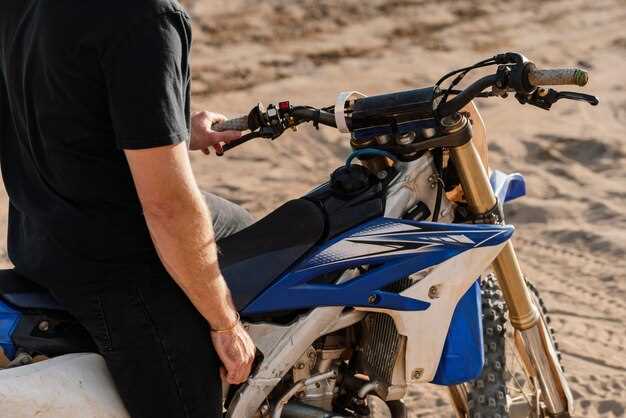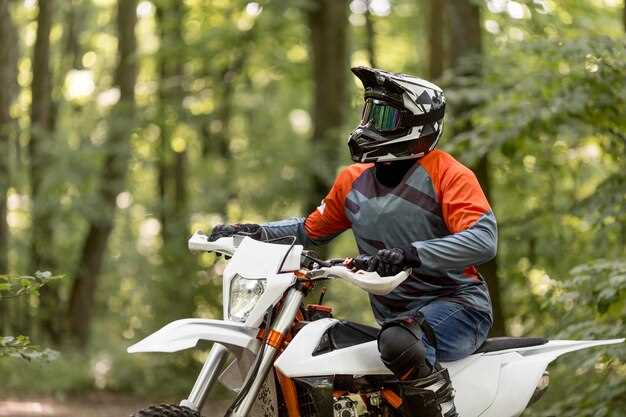
When it comes to off-road adventures, selecting the perfect dirt bike is crucial for an enjoyable and safe riding experience. With a plethora of options available on the market, understanding your personal riding style and requirements is essential. Whether you are a novice or a seasoned rider, the right dirt bike can significantly enhance your performance and enjoyment on the trails.
Different types of dirt bikes cater to various riding styles, and making an informed decision involves considering several key factors. Weight, engine size, and suspension are just a few of the critical elements to evaluate. Each of these characteristics can greatly influence your handling, control, and overall experience during rides.
Moreover, your intended use–be it racing, trail riding, or adventure biking–demands a bike that complements your skill set and preferences. In this article, we will explore the distinctive features of various dirt bike categories and how they align with different riding styles. By gaining clarity on these aspects, you’ll be better equipped to choose a dirt bike that fits not only your skills but also your personal riding aspirations.
Understanding Different Types of Dirt Bikes
Dirt bikes are designed for various riding styles and terrains. Understanding the different types can help you choose the right bike for your needs. Below are some common categories of dirt bikes:
-
Motocross Bikes:
These bikes are built for racing on closed circuits. They are lightweight, have powerful engines, and feature long suspension travel to handle jumps and rough terrain. Typical engine sizes range from 125cc to 450cc.
-
Trail Bikes:
Trail bikes are designed for casual riding on off-road trails. They prioritize comfort and versatility, often featuring a smoother power delivery and comfortable ergonomics. Engine sizes typically vary from 125cc to 450cc.
-
Enduro Bikes:
Enduro bikes are specially designed for endurance racing. They come equipped with features that enhance performance over long distances, including a larger fuel tank and more robust suspension. Engine sizes usually range from 250cc to 500cc.
-
Dual-Sport Bikes:
These bikes combine features of off-road and street motorcycles, allowing for both on-road and off-road riding. They are street-legal and often feature lights, mirrors, and a more comfortable seating position. Engine sizes range from 250cc to 650cc.
-
Mini Bikes:
Mini dirt bikes cater to younger riders or beginners. They are smaller and less powerful, typically ranging from 50cc to 110cc. These bikes are ideal for learning basic riding skills.
Each type of dirt bike is tailored for specific riding environments and skill levels. When selecting a dirt bike, consider factors such as your experience, intended use, and riding preferences to ensure the best match for your riding style.
Assessing Your Skill Level and Experience
Understanding your skill level and experience is crucial when choosing the right dirt bike. Beginners typically benefit from lighter, more manageable bikes that are designed for ease of use and comfort. These models usually feature lower seat heights, less powerful engines, and simpler controls. Examples include 125cc or smaller bikes, which are ideal for newer riders to develop their skills.
As your skills grow and you become more confident, you may want to transition to a mid-range bike, typically ranging from 125cc to 250cc. These bikes offer more power and improved suspension, allowing for enhanced performance on varied terrain. Riders with some experience will appreciate the balance between control and speed, making it a suitable choice for trail riding and motocross.
Experienced riders often prefer higher displacement bikes, from 250cc to 450cc, which cater to aggressive riding styles and challenging terrains. These bikes offer advanced technology, better suspension systems, and greater power. However, they require a higher skill level to manage effectively, emphasizing the importance of assessing your capabilities before making a purchase.
Additionally, it’s important to consider the type of riding you plan to do. If you aim to participate in competitive events, a bike designed for racing might be more suitable, while casual riders may prefer a dual-sport or enduro model. Evaluating your experience and specific riding goals will help to ensure you select a bike that complements your abilities and enhances your riding experience.
Matching Bike Features to Your Riding Terrain
Understanding the terrain in which you plan to ride is crucial for selecting the right dirt bike. Different surfaces and environments require specific bike features to enhance performance, safety, and enjoyment.
For sandy or loose terrains, bikes with wider tires and a lower center of gravity are ideal. Wider tires provide better flotation, preventing the bike from sinking into the sand. Additionally, bikes with more suspension travel help absorb bumps and ensure smoother rides over shifting surfaces.
In contrast, rocky and rugged terrains benefit from bikes that feature durable frames and reinforced components. A higher ground clearance is essential to avoid damage from uneven rocks while allowing better maneuverability. Additionally, having a bike with good braking performance is vital for steep descents and narrow paths.
If your primary riding involves trails with a mix of mud and wet conditions, opt for bikes equipped with aggressive tread patterns. These provide maximum grip and control on slippery surfaces. Look for models with a powerful engine response to navigate through challenging mud pits efficiently.
For motocross tracks, lightweight bikes with responsive handling are preferred. The focus should be on agility, making it easier to execute jumps, turns, and quick maneuvers. A bike with adjustable suspension settings will allow you to fine-tune your ride based on track conditions.
Lastly, consider your level of experience and riding style. Beginners may benefit from bikes with user-friendly features like automatic clutches or lower power outputs to help build confidence. Advanced riders may look for high-performance models that offer customization options to match aggressive riding techniques.
Ultimately, the right dirt bike should harmonize with the terrain you plan to conquer, ensuring an enjoyable and safe riding experience.
Considering Engine Size and Performance Specifications

When selecting a dirt bike, engine size is a fundamental factor influencing performance, handling, and overall riding experience. Engine size is typically measured in cubic centimeters (cc), and it plays a crucial role in determining the bike’s power output and suitability for different riding styles.
Engine sizes typically range from 50cc for beginners and youth bikes to over 450cc for advanced and experienced riders. Smaller engines provide lower power and torque, making them ideal for novice riders who are still mastering their skills. In contrast, larger engines deliver higher horsepower, offering the speed and acceleration required for competitive racing or aggressive trail riding.
Performance specifications, such as horsepower and torque, further determine a dirt bike’s capabilities. Horsepower indicates how quickly a bike can reach speed, while torque reflects the engine’s pulling power at lower RPMs. For riders who plan to tackle steep hills or rugged terrain, a bike with higher torque will be advantageous. Conversely, those focusing on speed in flat tracks may prioritize horsepower.
Below is a comparison table that outlines the typical performance characteristics of different engine sizes:
| Engine Size (cc) | Rider Level | Typical Horsepower | Typical Torque | Ideal Riding Style |
|---|---|---|---|---|
| 50cc | Beginner | 5-10 hp | 4-6 lb-ft | Casual riding, youth bikes |
| 100-125cc | Intermediate | 10-20 hp | 7-15 lb-ft | Trail riding, beginner to intermediate racers |
| 250cc | Advanced | 20-40 hp | 15-25 lb-ft | Cross-country riding, competitive racing |
| 450cc+ | Expert | 40+ hp | 25-35 lb-ft | Professional racing, aggressive trail riding |
Ultimately, choosing the right engine size and understanding performance specifications is critical to matching a dirt bike with your riding style. Consider your skill level, the terrain you will be riding on, and your performance expectations when making a decision. This thoughtful approach will enhance your riding experience and ensure you select a bike that suits your needs effectively.
Evaluating Comfort and Fit for Long Rides
Choosing a dirt bike that offers optimal comfort and fit is crucial for long rides, as it directly impacts your overall riding experience and endurance. When evaluating a motorcycle, consider the seat height and width. A seat that is too high can make it difficult to maintain proper control, while a narrow seat may lead to discomfort during extended travels. Try different bikes to find a seat that allows you to maintain a relaxed posture with both feet comfortably on the ground when stopped.
The ergonomic layout of the handlebars and foot pegs also plays a significant role in comfort. Make sure the handlebars are positioned at an appropriate height and allow for natural wrist positioning. The foot pegs should be placed so that your knees can maintain a slight bend, reducing fatigue during long sessions. Adjustability in these components can further enhance fit and comfort based on your personal preference.
Wear gear that complements your dirt bike. Well-fitted riding gear, including pads and boots, can significantly improve comfort levels. Consider the material of the seat as well; softer seats are generally more comfortable but can cause issues during aggressive riding by allowing the rider to sink too deep, affecting control. Conversely, firmer seats provide better support but may not be the best for prolonged riding without breaks.
Additionally, take into account the bike’s suspension system. A good suspension setup absorbs shocks effectively, minimizing the impact on your body, and improving comfort on rough terrains. Make sure to test ride the bike over various surfaces to evaluate its performance and comfort over longer distances.
Finally, assess the weight of the dirt bike. A lighter bike is typically easier to handle over long rides and less taxing to maneuver. Balance this with power and stability. The right bike should provide you with the necessary control while ensuring that you feel comfortable operating it for extended periods without undue strain or fatigue.
Budgeting for Maintenance and Upgrades
Choosing a dirt bike is just the beginning of your riding journey; proper budgeting for maintenance and upgrades is crucial to maximize your investment and enhance your riding experience. Regular maintenance ensures that your bike remains in optimal condition, and timely upgrades can significantly improve performance and safety.
Regular Maintenance Costs
Maintenance costs can vary based on the bike’s make and model, but certain expenses are common across all dirt bikes. Routine tasks such as oil changes, air filter replacements, and brake inspections are essential. Budgeting around $200 to $500 annually for basic maintenance on a mid-range bike is a reasonable estimate. However, if you ride frequently or in challenging conditions, this figure may increase. Additionally, tire replacements can add another $100 to $300 annually, depending on the quality and brand.
Upgrades for Performance
Your riding style will dictate the types of upgrades necessary to enhance your bike’s performance. Whether it’s suspension upgrades, exhaust modification, or engine tuning, allocate funds for these improvements. A basic suspension upgrade can cost between $300 and $1,200, while a new exhaust system typically ranges from $200 to $600. Each upgrade affects your bike’s handling and overall performance, so choose wisely based on your needs.
Unexpected Repairs
Even with careful maintenance, unexpected repairs can arise. Mechanical failures or accidents may lead to significant repair costs. It’s wise to set aside a separate emergency fund of at least $500 to cover unanticipated issues. This will help you avoid financial strain during urgent repairs, allowing you to keep your bike in riding condition without delay.
Conclusion
Budgeting for maintenance and upgrades is essential for any dirt bike rider. A proactive approach to both routine maintenance and potential upgrades not only enhances the longevity of your bike but also elevates your overall riding experience. By planning your finances accordingly, you can ensure that you are prepared for both predictable and unexpected costs, paving the way for a successful riding journey.
